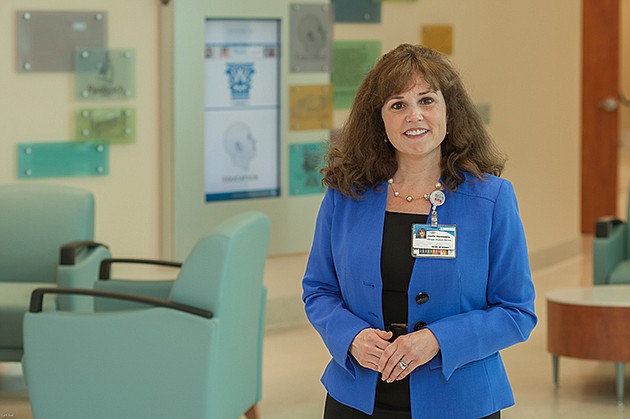For Joelle Hennesey, finding and recruiting doctors to come work for one of the largest medical practices in Sarasota can be narrowed down to one word: connector.
But in being a connector, Hennesey's work is anything but narrow.
The manager of physician services for First Physicians Group, Hennesey aims to always be fully prepared to woo a doctor to work for the practice, part of the Sarasota Memorial Health Care System. To do that, Hennesey has a wide and deep network of contacts, from Realtors and mortgage bankers to daycare operators and school principals — all the non-medical things a doctor needs to sway a decision. “I even know the veterinarians in town,” Hennesey says.
Another big non-medical task Hennesey handles is she helps the doctor's spouse get a job, again through her connections. “I believe you have to be holistic when you recruit doctors,” Hennesey says. “I like to know everyone, this way I can focus on what the physician needs.”
Hennesey started in health care as a social worker and substance abuse counselor, working for clinics and facilities in Philadelphia. She switched to physician recruiting in 2001, first with Manatee Memorial Hospital and Lakewood Ranch Medical Center in east Manatee County.
She joined First Physicians Group in late 2014, and has been busy: The practice hired 33 doctors in fiscal 2015, and now has more than 130 physicians.
The process to recruit a doctor is a slow build that usually takes 9-12 months. It starts with the need, in medical specialty, at First Physicians. After that, Hennesey uses her connections with med schools and hospitals nationwide and through an industry trade group, the Association of Staff Physician Recruiters. She looks for specialists or recent med school grads at the top of their class. “What you are really trying to find,” says Hennesey, “is the passive job seeker.”
Several other steps come after a candidate is identified. There could be phone calls to the candidate from top medical and hospital officials, including Sarasota Memorial CEO David Verinder. Then there's an interview with the specific medical group, in addition to other medical personnel. That's normally followed by tours of the area, dinners and other get-togethers.
Finally, Hennesey will work on the offer and contract negotiations. While money is important and a driver, a recent trend, says Hennesey, is young doctors value life outside of the office more than ever before. “Work-life balance is huge right now,” she says.
The lone significant aspect of Hennesey's recruiting strategy that has nothing do with connections is an intangible element available only to a select few recruiters: the Florida lifestyle.
That's especially appealing, Hennesey has found, to doctors in New York, Indiana, Wisconsin and other northern and Midwestern states. “My colleagues in other places hate when I say this,” Hennesey says, “but that can make this an easy area to recruit people to.”
TIPS
• Know your market, not just the candidate;
• Network constantly, in and out of the direct industry you work for;
• Be ready to work nights and weekends, not only 9 to 5. “Timing is everything with recruitment,” says Hennesey, “so you have to be flexible.”
— Mark Gordon






